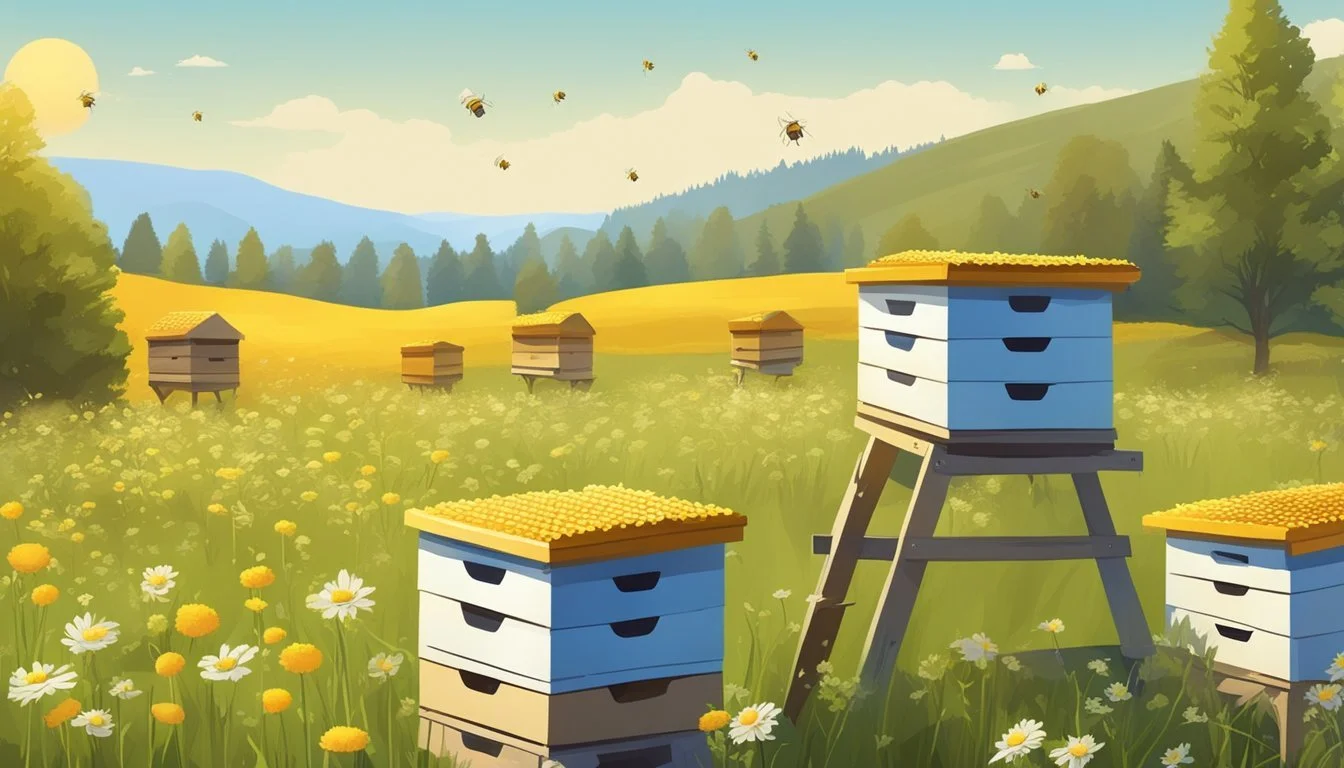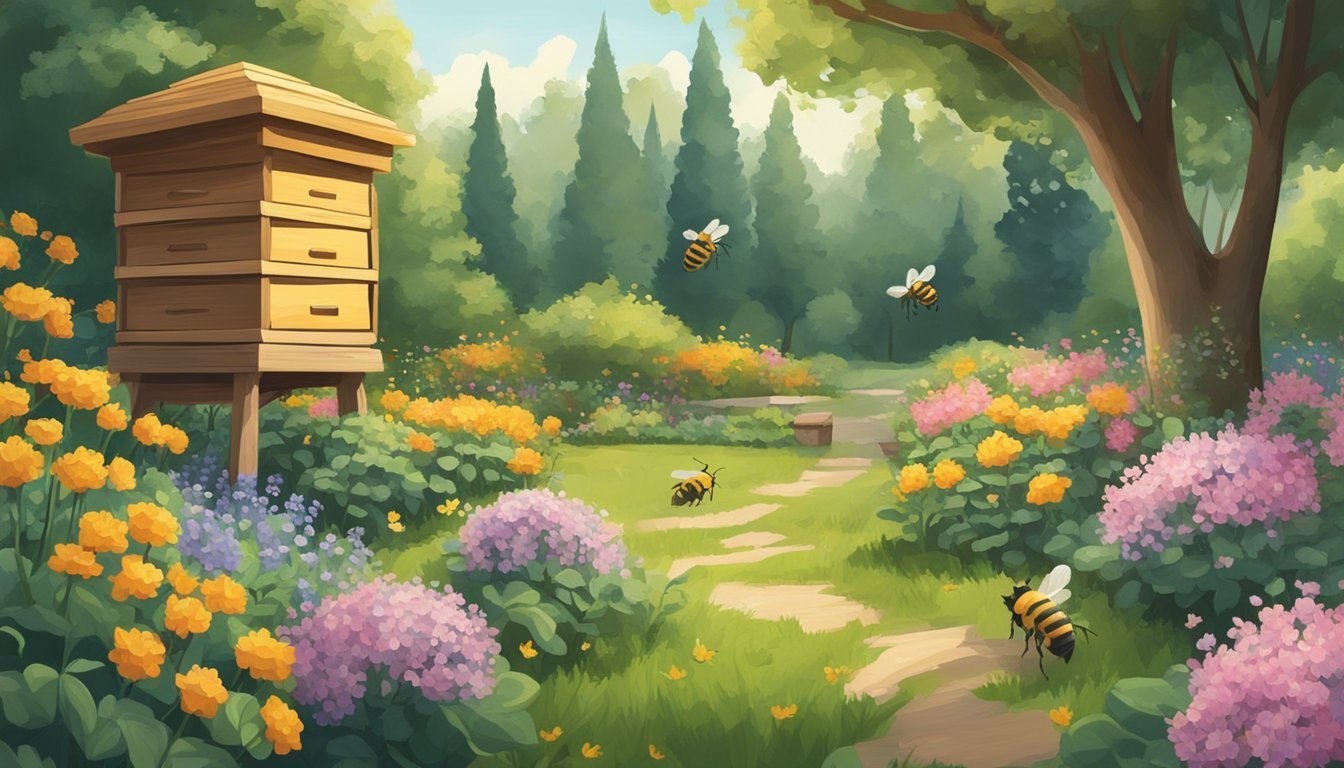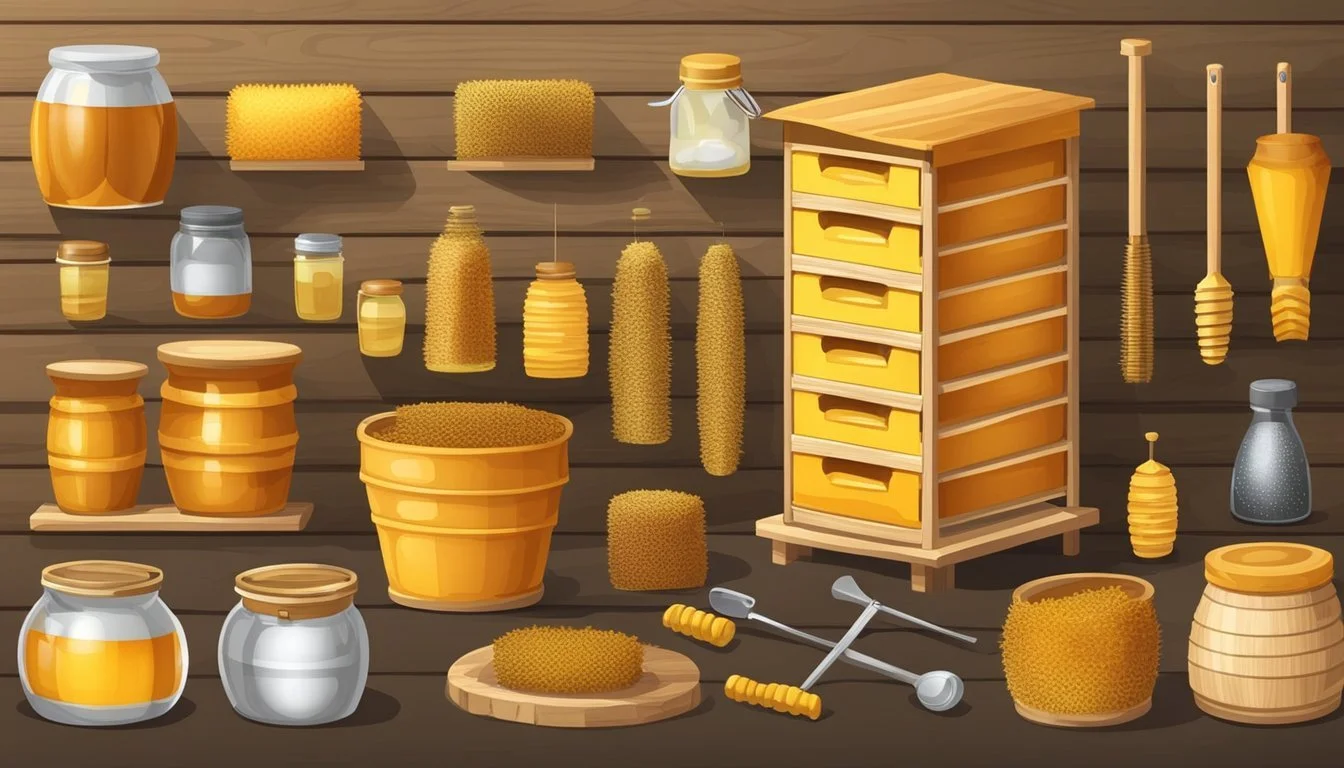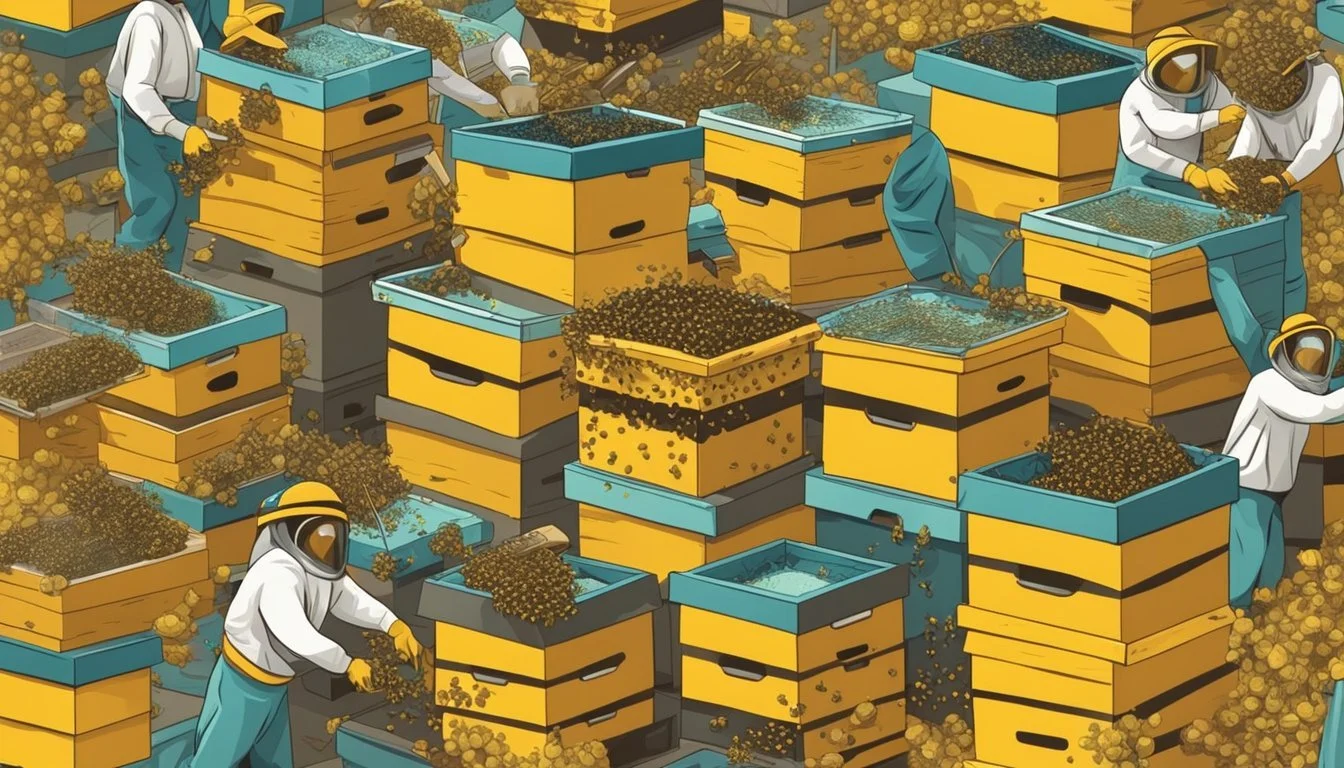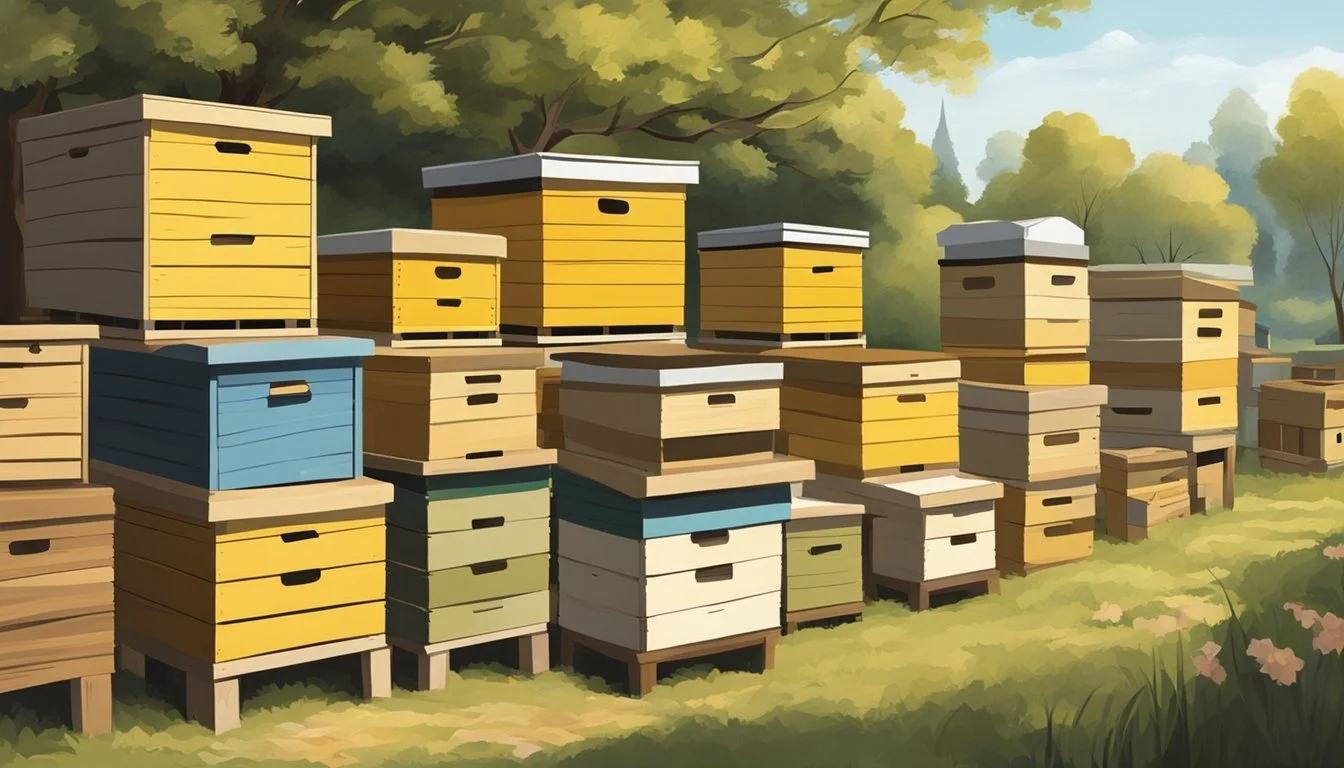The Different Types of Beehives Explained
A Guide to Selecting the Right Hive
Beehives are the cornerstone of apiculture—a practice known as beekeeping that involves the maintenance of bee colonies. With the diversity of beehives available, each variant offers unique advantages tailored to different beekeeping objectives, environments, and levels of experience. Understanding the various types of beehives is essential for both novice and seasoned beekeepers, as the hive structure can significantly impact colony health, honey (What wine goes well with honey?) production, and ease of management.
The most widely recognized beehive is the Langstroth hive, a vertical structure named after its inventor, Rev. Lorenzo Langstroth, and respected for its modular design and removable frames since the mid-19th century. Beekeepers often favor this type due to its ease of inspection and honey extraction. There are also other notable hive types like the Top Bar Hive, which facilitates natural bee behavior and comb building, and the Warre Hive, which aims to mimic the bees' natural nesting environment.
Choosing the correct type of beehive is crucial as it influences not only the welfare of the bees but also the sustainability and efficiency of the beekeeping practice. Beekeepers must consider factors such as climate, desired honey yields, physical strength required for hive management, and the bees' natural preferences when selecting the appropriate hive style. This foundational knowledge ensures that the beekeeping experience is rewarding and productive for both the keeper and the bees.
The Role of the Beehive in Beekeeping
The beehive serves as the foundational unit of beekeeping, intricately designed to accommodate bee behavior and facilitate management practices such as inspections and maintenance.
Understanding Bee Space and Beehive Design
Bee space is a critical concept in the design of beehives that refers to the precise gap required by bees to move within their colony without prompting the building of comb or joining structures together. This gap measures approximately 1/4 to 3/8 of an inch. Respecting bee space is paramount in beehive design to ensure bees can work unimpeded and to allow beekeepers to manage the hive with minimal disruption to the bees.
Modern beehives are crafted to provide a conducive environment for the bees while granting beekeepers the ability to conduct essential tasks. For instance, the Langstroth hive, recognized for its vertically stacking boxes, utilizes frames that maintain bee space automatically. This thoughtful design allows beekeepers to remove and inspect individual frames without destroying the bees’ intricate work.
The Importance of Beehive Maintenance
Maintenance is crucial for the health and productivity of a beehive. Beekeepers must perform regular inspections to check for diseases, pests, and ensure the queen is well and productive. These inspections should be thorough but also efficient to minimize stress on the bees.
Here's a basic maintenance checklist for beekeepers:
Inspect Frames: Check for brood patterns, and honey stores, and identify any signs of disease or pests.
Clean Propolis: Remove excess propolis to keep frames movable.
Monitor Bees: Look for normal activity levels and healthy bee behavior.
Check the Queen: Ensure the queen is present and laying eggs properly.
Maintaining a beehive involves regular cleaning, replacing old or damaged parts, and seasonal preparations such as winterizing. These tasks preserve the structure of the hive and support its inhabitants, ensuring a thriving colony.
Various Types of Traditional Beehives
Traditional beehives have been in use for centuries, offering various natural and sustainable methods for beekeeping. They range from simple structures to more intricate designs and are often crafted from natural materials found in local environments.
Skeps
Skeps are one of the oldest forms of beehives traditionally used in beekeeping. They are dome-shaped baskets, typically made from coiled straw or grass, bound together with sturdy, natural fiber. Beekeepers once favored skeps for their simplicity and the ease with which they could be constructed. However, skeps do not allow for frames to be removed, making honey extraction difficult and discouraging their use in modern beekeeping due to the inability to inspect for diseases.
Hollow Tree Beehives
Hollow tree beehives, also known as log hives, are a natural form of beekeeping that utilizes the hollowed-out trunks of trees. This type of hive mimics the natural environment that wild honey bees choose for their nests. The hollow tree provides insulation from weather extremes and protection from predators. These hives are traditionally found in forest regions where such trees are abundant.
Straw and Wicker Beehives
Straw and wicker beehives are traditional hives often associated with heritage practices of beekeeping in Europe. They are constructed from woven straw or wicker into shapes similar to skeps but differ in being more elaborate and often larger. These hives support the natural behavior of the honey bees, allowing them to build honeycomb in a manner similar to that in the wild. While these hive types are not commonly used in commercial beekeeping, they remain a part of the cultural heritage of many regions.
Popular Movable-Frame Hives
Movable-frame hives allow beekeepers to manage the bees efficiently by inspecting and manipulating frames. These hives are designed for easy removal and maintenance of the frames while minimizing the disturbance to the bees.
Langstroth Hive Overview
Langstroth hives are widely recognized for their standardized dimensions and removable frames. Here's a brief overview:
Brood Chamber: Located at the bottom, the brood chamber hosts the queen's eggs and developing bees.
Supers: These are stackable boxes containing frames for honey storage.
Frames: Typically made of wood or plastic, used to hold honeycomb and brood.
Foundation: A pre-structured base that encourages bees to build their comb.
Top Bar Hive Characteristics
The Top Bar Hive demonstrates a more natural approach and includes the following characteristics:
Horizontal Hive: A single, elongated box serving as the hive body.
Top Bars: Wooden bars placed horizontally from which bees hang the comb.
Foundation: Largely absent, as bees build the comb naturally.
Warré Hive Principles
Warré hives are designed to mimic the natural habitat of bees:
Vertical Design: Stacked boxes, where bees start building comb from the top down.
Quilt Box: Located above the top bar for insulation and moisture control.
Natural Beekeeping: Less intervention is required, promoting natural comb building.
National and WBC Hives
The National and WBC hutches are common in the UK and feature:
National Hive:
A single-walled hive with slightly smaller frames than the Langstroth.
Allows for brood and supers with the same footprint.
WBC Hive:
Double-walled for improved insulation.
More complex design, with additional protective outer 'lifts' around the frames.
Innovative Beehive Styles
Innovative beehive designs offer beekeepers advancements in ease of use and efficiency in honey extraction and hive management. These modern approaches can also support bee health and contribute to sustainable beekeeping practices.
The Revolutionary Flow Hive
The Flow Hive stands out as a remarkable innovation in beekeeping. It introduces a honey extraction system that allows beekeepers to harvest honey without opening the hive and disturbing the bees. Its modular structure is characterized by frames with partially formed honeycomb cells. When beekeepers turn a key, the cells split apart to create channels for the honey to flow down, directly out of the hive and into containers. This approach spares beekeepers the labor-intensive process of traditional honey extraction and significantly reduces stress on the bees.
Alternative Hive Designs
Alternative hive designs have emerged to offer varying benefits in terms of ease of use, adaptability, and compliance with natural bee behaviors:
Long/Horizontal Hive: This design favors ease of access and management, allowing beekeepers to work with the bees at waist level, minimizing the need to lift heavy boxes.
Einraumbeute: Also known as the "one-room hive" or "golden hive," this system is praised for its natural beekeeping ethos and foundationless frames, which encourage the bees to build their own natural comb structures.
Hex Hive: This is a less common but interesting hive with a hexagonal shape, reflecting the bees' own comb design. It is often touted for its aesthetic appeal and sometimes for its claimed space efficiency.
Foundationless Beekeeping
Foundationless beekeeping is an approach that lets bees build comb without the pre-made foundation typically provided in conventional hives. Advocates argue that it allows bees to construct their comb more naturally, which can support the health and resilience of the colony. This practice is compatible with various hive designs, including both traditional and alternative models. Foundationless frames can be used in hives such as the Langstroth, Top Bar, or Warré hives, encouraging bees to draw out comb to their own preferred dimensions and cell size.
Components of a Beehive and Their Functions
In understanding beehive components, it's essential to recognize how each part plays a critical role in the lifecycle and productivity of the colony. The beehive architecture is designed to support bee activities such as brood rearing and honey storage while ensuring protection and order.
Frames and Foundation
The frames are rectangular structures that hold the foundation, which serves as a base for bees to build their honeycomb. These combs are essential for the colony's operations, as they store honey, pollen, and house the developing brood. The foundation often comes coated with a thin layer of wax to encourage bees to build comb.
The Brood Box and Honey Supers
The Brood Box, typically positioned at the bottom of the hive, is the heart of a bee colony where the queen lays eggs, and the brood is raised. It contains frames with comb primarily used for brood rearing. In contrast, honey supers are boxes added above the brood box where bees store surplus honey. These can be separated from the brood box by a queen excluder, a grid that allows worker bees through to the supers but is too small for the queen to pass and lay eggs there.
Bottom Boards and Entrance Reducers
The bottom board serves as the hive's foundation, supporting the boxes and frames. It can also assist in controlling hive temperature and repelling pests. Entrance reducers can be placed at the hive's entrance to protect the colony from invaders and assist in maintaining the hive's internal environment. These are especially beneficial during the colder months or when the colony is young and more vulnerable to threats.
Beehive Management and Beekeeper's Role
Effective beehive management is a critical component for the success of any beekeeping endeavor. The beekeeper plays a pivotal role, which encompasses conducting regular hive inspections and understanding bee colony behavior to ensure a healthy and productive hive.
Routine Hive Inspections
Hive inspections are fundamental to successful beehive management. Beekeepers should inspect their hives approximately every two weeks, particularly during active bee months, to monitor the health of the colony and intervene when necessary. During inspections, one key task is to check for the presence of a healthy queen and signs of regular brood patterns. Beekeepers look for pests and diseases, and also assess food stores; it's crucial to ensure the bees have enough stores for winter, as a strong winter cluster is essential for surviving cold months. The presence of a starter strip can facilitate comb building and guide the bees in drawing out straight comb, which is beneficial during inspections.
Understanding Bee Colony Behavior
Beekeepers must recognize the various behaviors exhibited by different roles within the bee colony. For instance, foragers are responsible for collecting nectar and pollen, while nurse bees care for the young and builders maintain the honeycomb. Understanding these roles can assist beekeepers in identifying issues within the hive. Observing the entrance for guard bee activity can also provide insights into the colony's health. This knowledge informs the beekeeper's actions, whether it’s providing additional resources or managing space within the hive to prevent swarming.
By maintaining a routine inspection schedule and having a profound understanding of bee colony behavior, beekeepers can foster a thriving bee population and a successful apiary.
Beehive Accessories and Tools
Proper beekeeping requires a suite of specialized accessories and tools to ensure successful hive management and personal safety. This section covers essential gear, from protective clothing to hive maintenance tools.
Protective Clothing and Safety
Protective Clothing: A beekeeper's safety hinges on the right protective clothing. Essential items include:
Beekeeping Suit: Full-body protection with a mesh veil to prevent stings while allowing visibility.
Gloves: Leather or tough synthetic material to protect the hands.
Boots: Sturdy boots that can be secured at the trouser end to prevent bees from crawling in.
Viewing Window: Some hives come with a built-in viewing window, allowing beekeepers to observe their bees without opening the hive and risking stings.
Beekeeping Supplies and Tools
Beekeeping Tools: Precision is paramount in hive management. Here are the must-have tools:
Smoker: Calms bees by masking alarm pheromones.
Hive Tool: A multipurpose implement for prying apart frames and scraping wax.
Brush: Gently removes bees from surfaces or frames.
Supplies for Hive Maintenance:
Horizontal Bars or Frames: Foundational pieces that hold comb or honey stores in structure.
Foundation Sheets: Waxed sheets that encourage comb building along desired patterns.
For Beginners: Starter kits often include the basic tools and a simplified version of protective gear, ideal for newcomers to get a feel for the activity.
By equipping themselves with these tools and accessories, beekeepers can confidently approach their tasks, focusing on the health and productivity of their hives.
The Harvesting Process and Honey Production
Honey production is a meticulous process that transforms flower nectar into the sweet, golden liquid we know. Beekeepers play a crucial role in this by ensuring the efficient harvesting and extraction of honey, balancing the needs of the bees with the demand for this natural product.
The Process of Honey Harvesting
Honey harvesting is the gathering of honey from the beehive. Beekeepers must wait for the right time to harvest, typically when the hives are full of honey and the bees have capped the cells with wax. This indicates that the honey is ripe. The beekeeper carefully removes the frames, avoiding unnecessary disturbance to the bees. They then use a heated knife or a special device to uncap the wax seal. Harvesting requires precision to ensure that the bees are not harmed, and the structure of the combs is maintained for future honey production.
Techniques for Honey Extraction
Once the honeycomb is uncapped, the honey extraction process begins. There are mainly two techniques:
Centrifugal Force Extraction:
Frames are placed in an extractor, a drum that spins the frames, using centrifugal force to fling the honey out of the comb.
Extractors come in various sizes, accommodating different numbers of frames.
Gravity Straining Extraction:
Honey is allowed to flow from the combs through a series of fine strainers to remove any impurities.
This method is more labor-intensive and slower but requires less equipment.
The chosen method depends on the scale of honey production and the resources available. Post-extraction, honey is often left to settle in a tank, allowing air bubbles and fine particles to rise to the top. Beekeepers must handle heavy lifting and take care to prevent condensation, which can deteriorate the honey’s quality. They manage these risks by keeping the honey in airtight containers and maintaining a controlled environment.
Historical and Cultural Significance of Beehives
Beekeeping is a practice deep-rooted in history, with beehive designs evolving to meet both cultural and practical needs. The progression from ancient to modern hives reflects a blend of innovation and tradition within apiculture.
Evolution of Beehive Designs
Ancient beehives were simple constructions like skeps, log hives, and box hives, primarily designed to imitate natural bee habitats. Vertical hives came much later, incorporating the principle of bee space for improved bee management and honey extraction. These designs set the stage for the modern Langstroth hive, which revolutionized beekeeping in the 19th century.
Skeps: Woven baskets that symbolize traditional beekeeping but are rarely used today due to their limitations in honey harvest and hive inspection.
Log hives: Hollowed-out logs that mimic natural bee habitats and represent an early phase of man-made bee homes.
Box hives: Simple enclosures that allowed for more control than log hives and skeps but lacked features for easy honey extraction.
Contributions by Abbé Émile Warré
The French monk Abbé Émile Warré championed the vertical hive known as the Warré hive, also termed the "people's hive" for its simplicity and cost-effectiveness. This hive design was based on the principle of minimal intervention to mirror the natural behavior and conditions preferred by bees.
Warré Hive Features:
Vertical stacking boxes allowing for natural downward expansion of the nest
Designed to be easy to build and manage for small-scale beekeepers
Focus on bee welfare by facilitating a more natural living environment
The evolution of beehives has cultural significance as it not only reflects the technological advancements in apiculture but also represents the harmony between human development and the respect for the natural world exemplified by beekeepers' practices.

